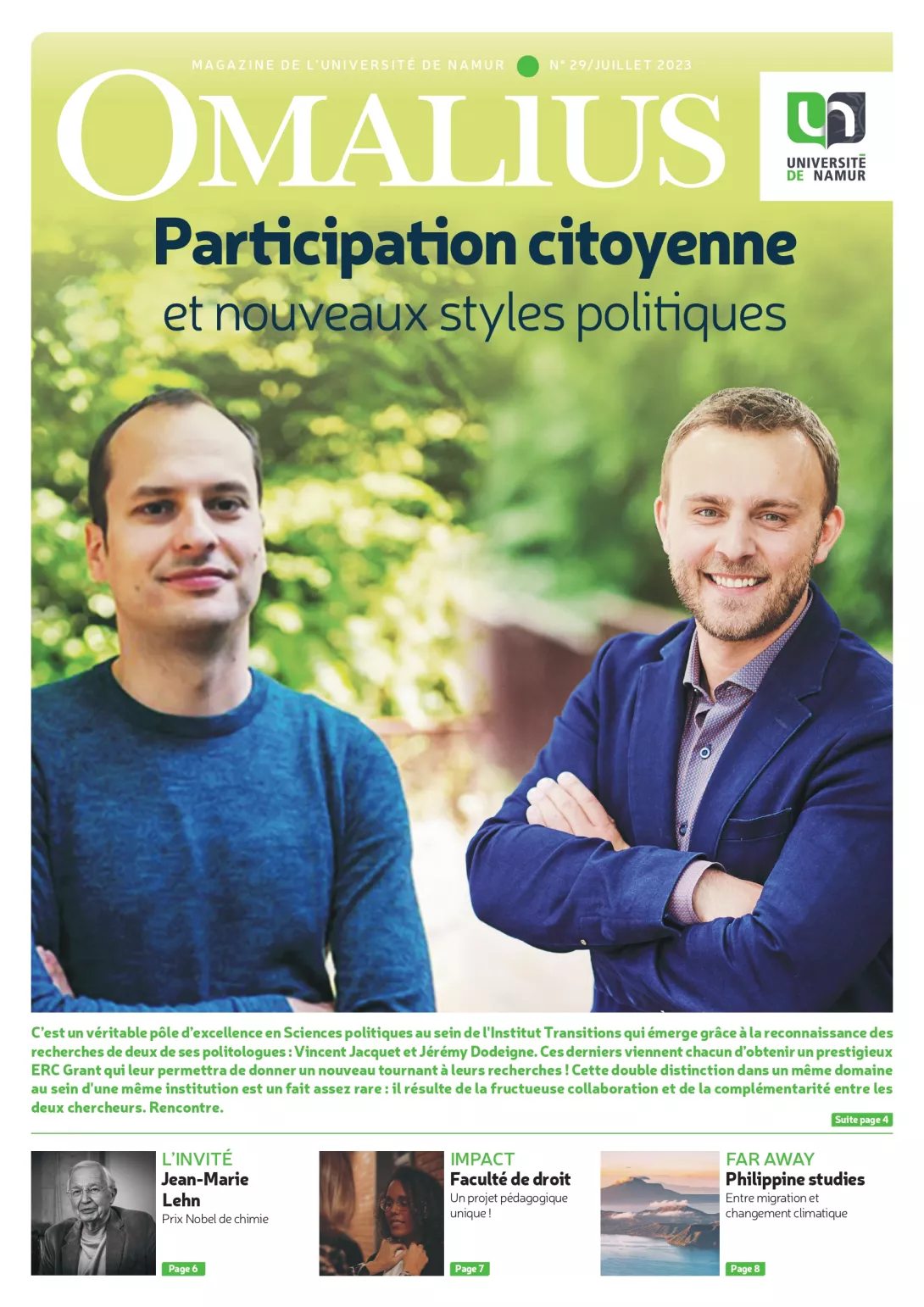
This article is taken from the "Impact" section of the #29 Omalius magazine (July 2023).
The first of these projects has linked the PraME centre and the State Archives in Namur for nearly eighteen months. And Nicolas Ruffini-Ronzani, who was hired to carry it out, makes no secret of the fact that he is a happy researcher. "After various post-docs in Belgium and France, I had reoriented my professional career to become manager of the "Revue d'histoire ecclésiastique", based at UCLouvain. And then, the project presented by my former thesis sponsor Jean-François Nieus, FNRS senior researcher at UNamur, was accepted and I was immediately recruited.
10 years on
What is the strength of FED-tWIN? "The funding is granted for ten years, whereas for most research projects it doesn't exceed two or three years," points out Nicolas Ruffini-Ronzani. "For researchers like me, this opens the door to longer and more ambitious projects! The aim of the project is to enhance the value of certain medieval archive collections that have been preserved, or rather forgotten, in the repositories of the Belgian State Archives. "We tend to think that everything to do with the medieval period is well known and well archived, but that's not the case at all! Our knowledge of this period is in fact based on only a small part of the documentation. Especially for the 13th, 14th and 15th centuries, there is still a huge amount to be done!
Context
By exploiting the rich archive of the Abbey of Notre-Dame du Vivier in Marche-les-Dames, we can learn more about this community of Cistercian nuns, its possessions, its buildings and the context in which it developed. "Even if this research does not fundamentally change our view of the Middle Ages, it does shed new light on little-known realities. Similarly, "I have high hopes for the major project I'm currently working on and which I've been asked to prioritise as part of the FED-tWIN project: the Saint-Jacques de Liège chartarium, a collection of just under 2,000 charters* that has been on hold as long as the State Archives have existed, i.e. since the 19th century. This great Benedictine abbey was founded in the early 11th century, and documents from that period are rare in Belgium.
[*A charter is a written document, usually on parchment in the Middle Ages, which records a legal action (sale, donation, etc.) and which usually has means of authentication (list of witnesses, seals, etc.).]
Service service
Why so much neglect? "Probably because of a lack of staff, or because there were other priorities. It's just the luck of the draw. Part of his work consists of describing each charter individually, a somewhat tedious exercise, but undeniably useful. "Because that's one of the aims of my contract: to serve the scientific community in the broadest sense, from students looking for a subject for their dissertation to local scholars studying the history of their village, not forgetting historians and other researchers. And to help them, as is the rule at the PraME centre, to relate changes in writing practices to more global social transformations.
Unrivalled
For Xavier Hermand, Professor in the Department of History and promoter of the project accepted in December 2022, this second FED-tWIN funding, granted to the PraME centre for its collaboration with the Royal Library of Belgium, comes as no surprise. With PraME, UNamur, which is the only university in Belgium, and indeed in Europe, to offer a range of courses from undergraduate level specifically aimed at the study of written documents from the Middle Ages, has created a centre without equal. "Not only does it bring together historians of the Middle Ages and Roman philologists, but it covers the entire medieval period and all types of written document, with a tendency to favour the most ordinary. Thus, since the beginning of my career, I have been more interested in late medieval manuscripts from the ecclesiastical world, which are usually neglected by research, and my colleague Jean-François Nieus, the promoter of Nicolas Ruffini-Ronzani, is working on management writings produced in seigneurial environments, rather than royal documents, which have long monopolised the attention of specialists."
The what and the how
The Royal Library of Belgium holds some 4,500 medieval manuscripts, most of which have never been studied in depth! "During the ten years available to us under the FED-tWIN programme, we have chosen to work, at least initially, on a few hundred manuscripts, as well as incunabula from the end of the 15th century, which come from religious houses in Brabant belonging to the Windesheim congregation, which was born in the wake of a spiritual movement that was very dynamic in our regions at the time, the 'devotio moderna'. These monasteries produced a huge number of manuscripts, which we will study not only in terms of their content and materiality, but also to discover what they were used for. Today, specialists in written culture are not just asking what people read in the Middle Ages, but how they read. And, more broadly, how the monasteries were part of the cultural dynamics of the time.
Collaboration
The researcher who will bring this project to fruition has not yet been appointed. "The call for applications was launched in June, and I hope that the appointment will be made in November. And that a fruitful collaboration will be established between the person chosen and Nicolas Ruffini-Ronzani, because, "to fully understand the writings left to us by the Middle Ages, you need to be able to move from the archives to the library and from the library to the archives". And then there's the FED-tWIN principle: two is always better!
How does it work?
According to Jean-Pascal Piret, the University of Namur's single point of contact (SPOC) with BELSPO for the FED-tWIN programme, the aim of the FED-tWINs - 125 in all, awarded over five calls, 56% to Dutch-speaking universities and 44% to French-speaking universities - is to enable research activities between federal scientific establishments (FSEs) and universities in the two language communities, by funding FED-tWIN postdoctoral profiles. "These postdocs are shared 50/50 between the SFE and the partner university. And the funding is over ten years. From year 1 to year 5, the Federal Government pays the entire cost of the postdoc profile; then, from year 6 to year 10, the Federal Government contributes 50% of the budget and the university and the scientific establishment each contribute 25%. At the end of the ten-year period, BELSPO withdraws, and the decision as to whether or not to continue working with the researcher is left to the discretion of the ESF and the university". But whether or not the adventure ends in a permanent partnership, the best definition of FED-tWIN is win-win.
Article written for Omalius magazine by Marie-Françoise Dispa.

Omalius
This article was extracted from issue #29 of the Omalius magazine (July 2023).
